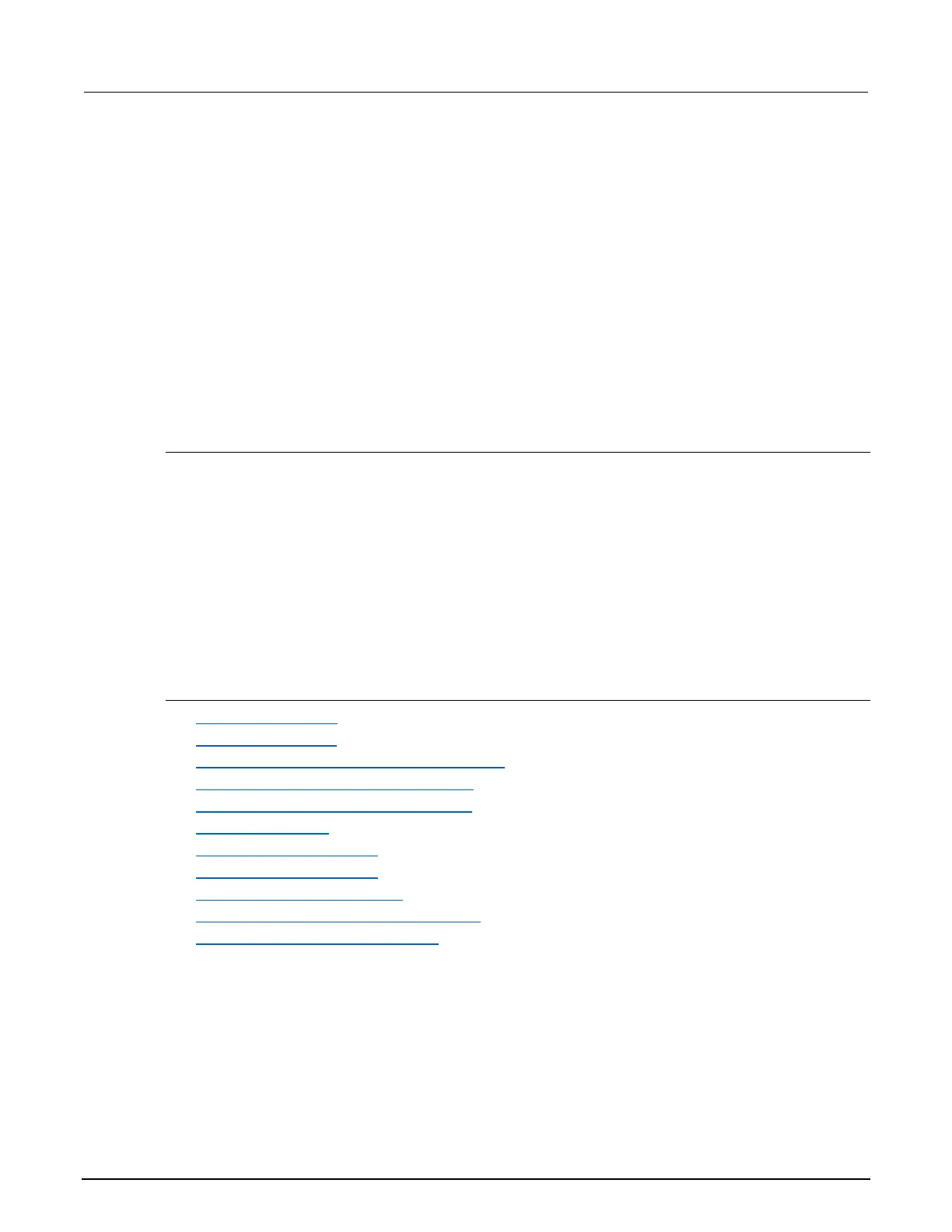Calculating resistance reading limits
Resistance reading limits must be recalculated based on the actual calibration resistance values
supplied by the equipment manufacturer. Calculations are performed in the same manner as shown
in the preceding example. Use the actual calibration resistance values instead of the nominal values
in the example when performing your calculations.
For example, assume that you are testing the 10 kΩ range using an actual 10.03 kΩ calibration
resistance value. Using Series 3700A one-year 10 kΩ range accuracy of (30 ppm of reading +
3 ppm of range), the calculated reading limits are:
Reading limits = 10.03 kΩ ± [(10.03 kΩ x 30 ppm) + (10 kΩ x 3 ppm)]
Reading limits = 10.03 kΩ ± [(0.3009) + (0.03)] Ω
Reading limits = 10.03 kΩ ± 0.3309 Ω
Reading limits = 10.029669 kΩ to 10.030331 kΩ
Restoring factory defaults
To restore the instrument to its factory front-panel (bench) defaults before performing the verification
procedures:
1. Press the MENU key.
2. Turn the navigation wheel to highlight SETUP and then press the ENTER key.
3. Turn the navigation wheel to highlight RESET and then press the ENTER key.
Performing the verification test procedures
The following topics provide a summary of calibration verification test procedures and items to
consider before performing any calibration verification test.
Test summary
• Verifying DC voltage (on page B-5)
• Verifying AC voltage (on page B-7)
• Verifying DC current 10 µA to 100 µA ranges (on page B-9)
• Verifying DC current 1 mA to 3 A ranges (on page B-10)
• Verifying AC current 1 mA to 3 A ranges (on page B-12)
• Verifying frequency (on page B-13)
• Verifying 4-wire resistance (on page B-14)
• Verifying 2-wire resistance (on page B-15)
• Verifying dry circuit resistance (on page B-16)
• Verifying 1 Ω and 10 Ω resistance ranges (on page B-18)
• Verifying zeros using a 4-wire short (on page B-19)
If the Series 3700A is not within specifications and not under warranty, adjust the instrument.

